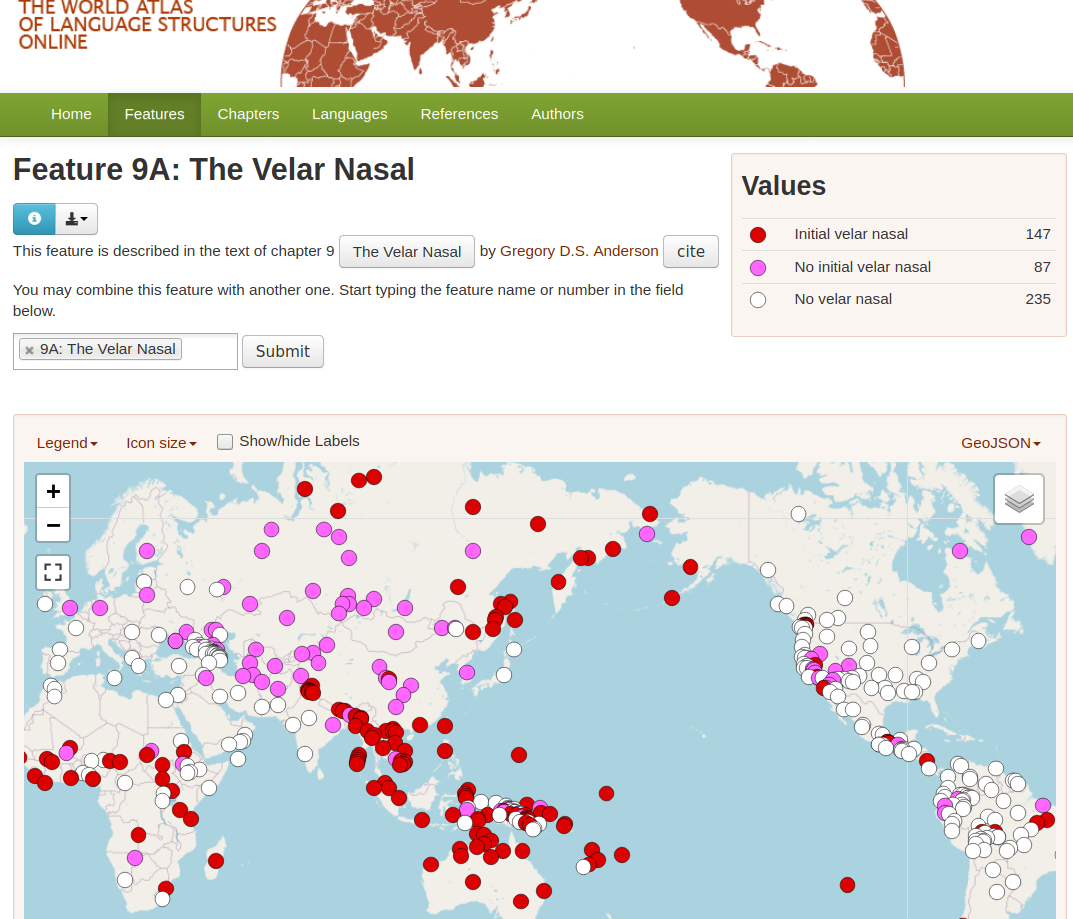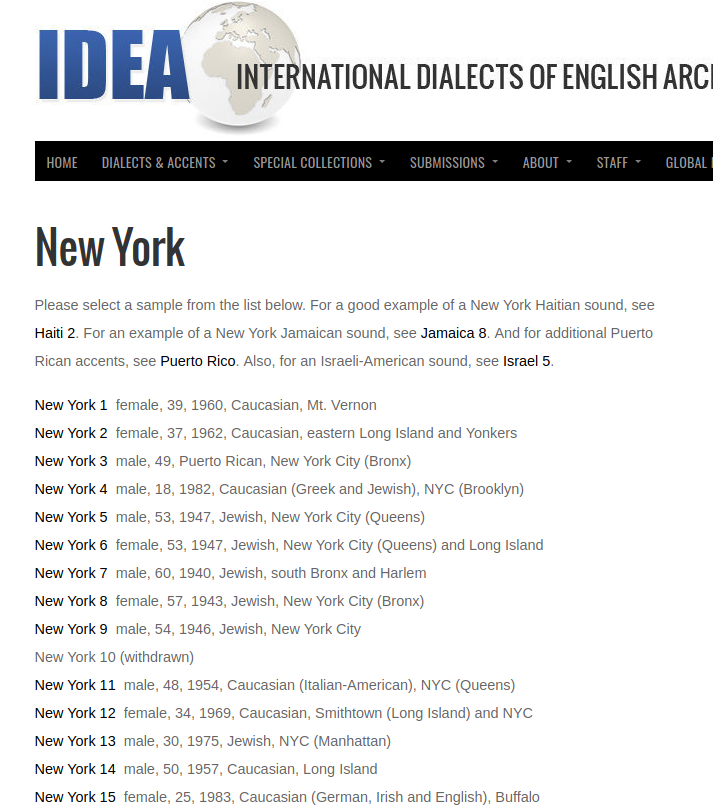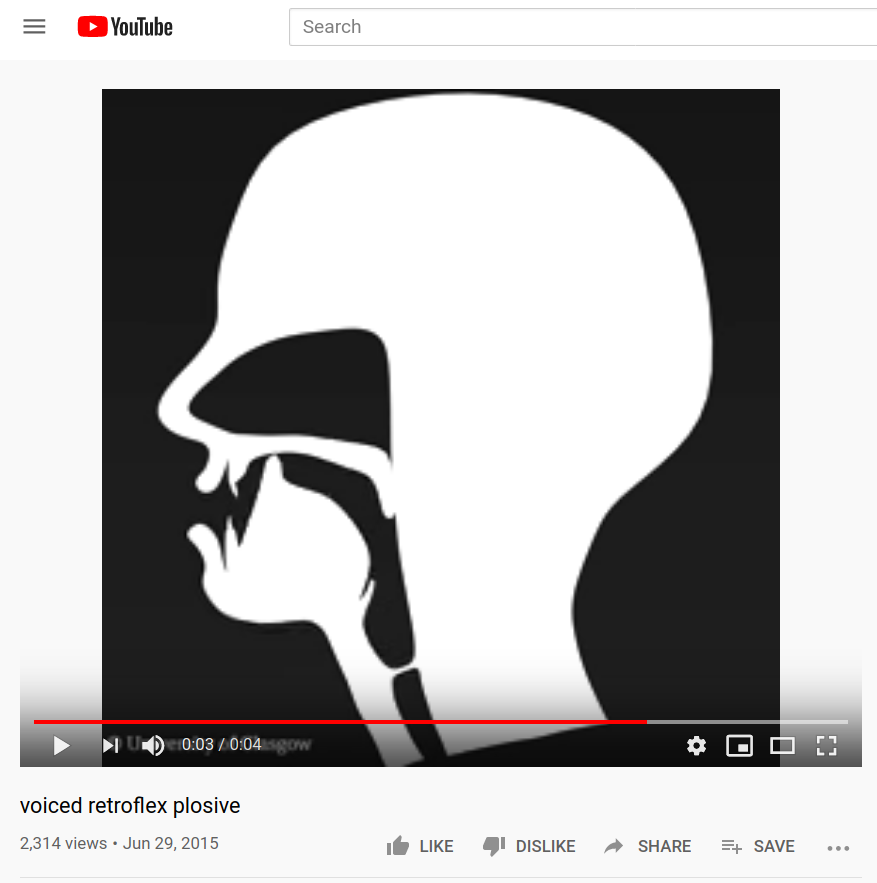These are some resources for phonetics students who want to know what languages have certain sounds, how these sounds are produced, and where in the world the languages are spoken.
- World Atlas of Linguistic Structures: this is a resource on linguistic typology–classification of languages according to various characteristics. There is a page listing features of interest, and the atlas can be searched for specific language names, as well. Here is the page on the velar nasal, for example:

As with any typological resource, it is a good starting point, but you should always look at primary sources for further research.
- The UCLA Phonetics Vowels and Consonants page: A classic resource that goes with Peter Ladefoged’s books A Course in Phonetics and Vowels and Consonants. For many languages, there are audio files of minimal pairs illustrating unusual contrasts. The audio was often recorded in the field so the quality is sometimes fuzzy. A newer version of the same materials can be accessed on Keith Johnson’s website.
- International Dialects of English Archive: this has recordings of English speakers reading the same two texts. For American dialects, there are multiple speakers from each state, and their age and some other demographic information is given:

- Articulatory IPA: A great collection of short MRI, ultrasound, and schematic videos illustrating various sounds.

- Illustrations of the IPA: From the Cambridge University Press Journal of the International Phonetics Association, a series of articles that do sketches of individual languages’ sound systems. Search the journal contents by language name or sound type. Many of the articles are open source, and they come with audio files of high quality that go with the transcriptions in the book. To see the audio files for an article, click on its “Supplementary Materials” tab.
- UPSID: the UCLA Phonological Segment Inventory Database. This is one of the older databases, with just 451 languages, but it is supposed to be balanced geographically and genetically (that is, related languages are not overrepresented). It’s a good starting point for researching the typology of sound inventories.
- Interactive Sagittal Section: Pose the vocal tract in your browser to see which sounds are produced.